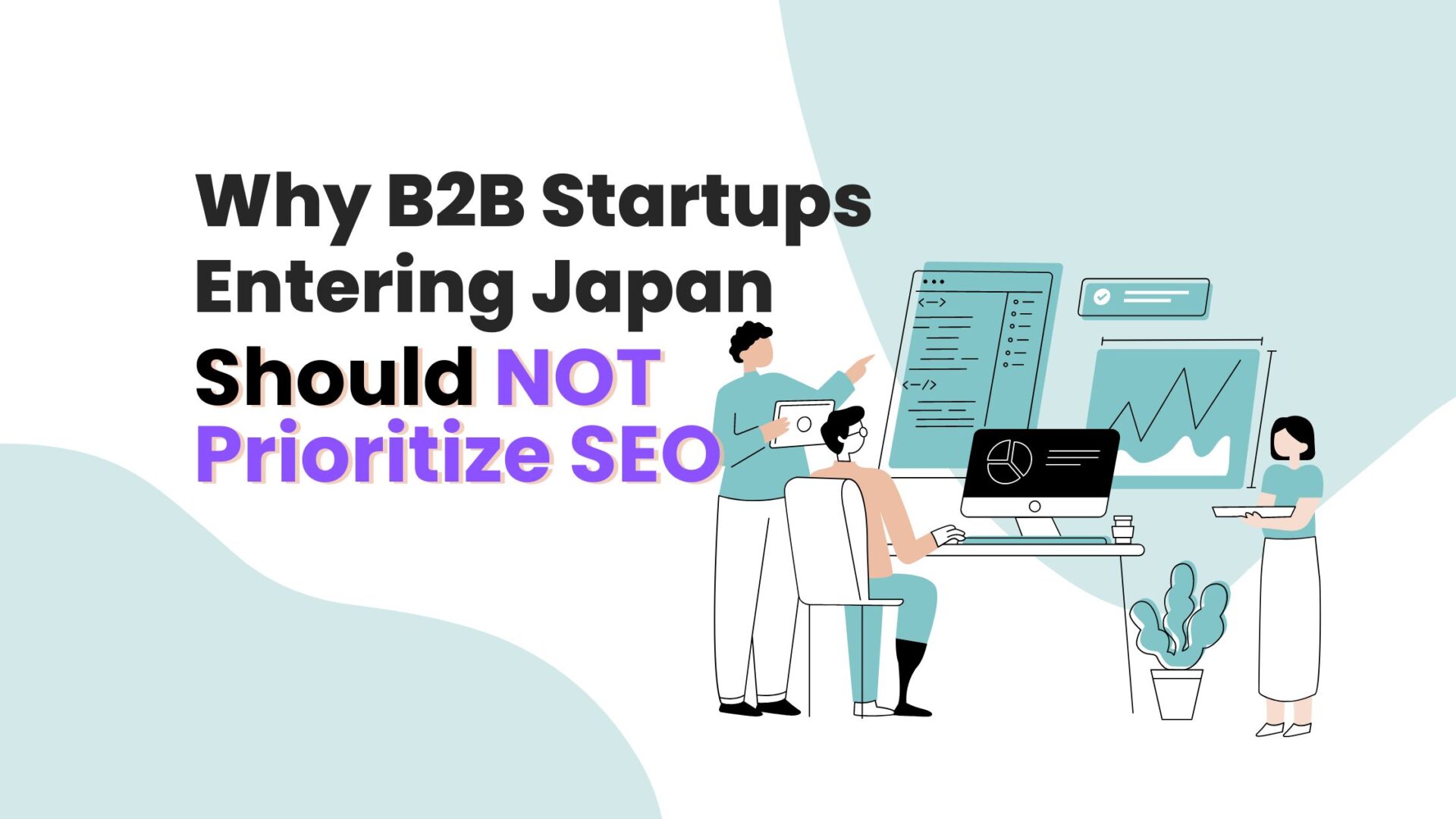In Japan, companies running their online owned media primarily do so for lead generation and brand recognition. Approximately 60% report these as their main objectives, with other key reasons including educating leads, increasing engagement, and boosting web traffic. All these goals can be summarized into one primary aim: generating leads. To achieve this, companies must optimize their owned media for search engines like Google, a process known as SEO.
Successful media operations heavily depend on how well-optimized a website is for SEO. However, how effective is this approach for B2B businesses just entering the Japanese market? The road to winning at SEO might be better pursued as a later goal. Here’s why B2B startups entering Japan shouldn’t prioritize SEO initially.
Content
The Goal of Having Owned Media
Companies invest in SEO because, to be found in the vast ocean of the web, their sites need to rank high in Google search results. High rankings ensure that a company’s content is visible to potential customers actively searching for relevant products or services. In an environment overflowing with content, SEO is essential for standing out and attracting organic traffic, which can lead to higher engagement and conversions. For established companies with the resources and time to commit, SEO can be a powerful tool for sustaining long-term growth.
Why SEO Shouldn’t Be the Initial Priority
SEO Takes Time and Delays ROI
SEO is a long-term strategy that requires consistent effort over months or even years to show significant results. This delay in tangible returns can strain financial resources and dampen morale, especially for startups looking for quick validation of their business model and market traction. Additionally, investing in SEO requires skilled personnel, such as SEO experts, who can navigate the complexities of optimization and manage external writers. These efforts may not yield the immediate results needed to establish a strong presence in a new market, making it challenging to maintain motivation and momentum until steady results are achieved.
Limited Resources
B2B startups often operate with limited resources, making it essential to allocate them strategically. SEO demands continuous content creation, optimization, and monitoring, which can drain the valuable time and effort of precious staff. Focusing on more immediate and impactful marketing strategies can be a better use of these resources.
High Dependency on Search Engine Algorithms
Relying heavily on SEO makes a startup vulnerable to search engine algorithm changes. Google’s frequent updates can drastically affect search rankings, leading to fluctuations in traffic and potential loss of leads. For a startup in a new market, this instability can be detrimental.
Even with successful SEO, there’s a risk of attracting visitors who quickly leave the site (high bounce rates) if the content doesn’t meet their needs or expectations. This can undermine the effectiveness of SEO efforts and waste the initial investment made to drive traffic.
High Bounce Rates
According to customedialabs, blogs and news websites (owned media) experience high bounce rates ranging from 65% to 90% (“Bounce Rates: What’s Good, What’s Bad, and Why You Should Give a Damn,” customedialabs). This indicates the challenge of converting visitors on these platforms, highlighting the importance of delivering highly relevant and engaging content to keep them engaged and maximize the effectiveness of SEO efforts. High bounce rates can undermine the initial investment made to drive traffic and reduce the overall impact of SEO strategies.
The report also points out that “Blog posts have an expected 65% or much higher bounce rate numbers. Visitors usually leave after getting value from the relevant information in an article.”
How to Reach Your Audience Without SEO
Launching a blog page for a startup in Japan, especially without a powerful web domain, often results in minimal traffic and visibility. Despite meticulous keyword planning, competing with established entities can be daunting. However, direct outreach to your leads can bypass these challenges, serving as an interim solution while your website gains traction.
Engage Your Audience Through Newsletters
- Define Content Goals: Begin by clarifying why you started content marketing. Is it to educate, inform, or shape perceptions about your services? Tailor your content strategy accordingly.
- Build Your Contact List: Leverage existing contacts and business cards. Digitize these into your CRM system to kickstart your newsletter campaign.
- Craft “Flow” & “Stock” Content: Create a mix of “Flow Content” on trending topics and “Stock Content” showcasing expertise and using targeted keywords.
- Launch Your Newsletter: Once your content strategy is in place, launch your newsletter announcing your valuable content offerings. Regularly send updates to keep your audience engaged.
- Drive Engagement Through Consistency: Maintain a consistent schedule for newsletter delivery, whether weekly or monthly. Regular communication is key to building lasting relationships.
By prioritizing direct engagement through newsletters, startups can establish meaningful connections with their audience and overcome the initial challenges of building online visibility.

